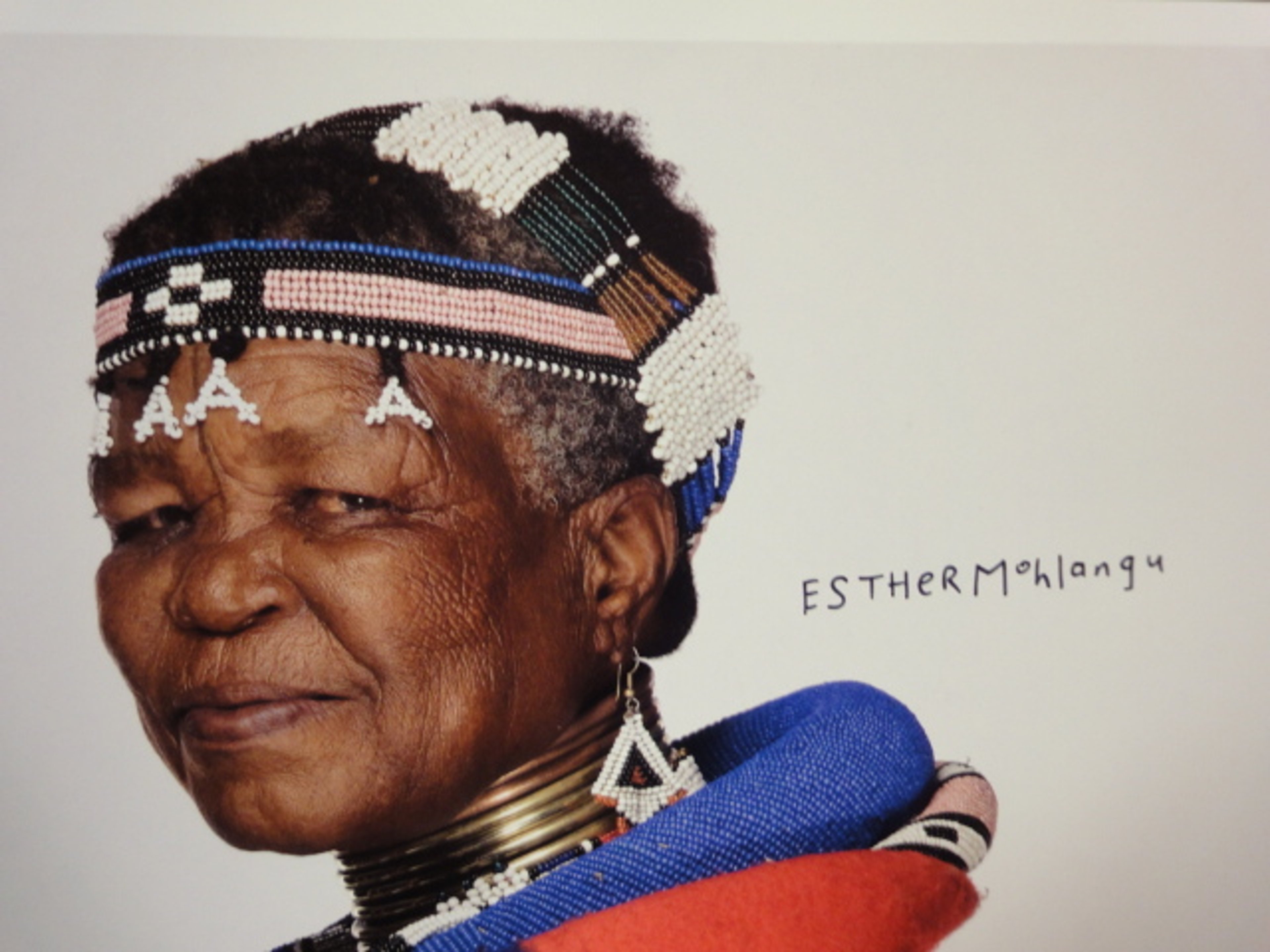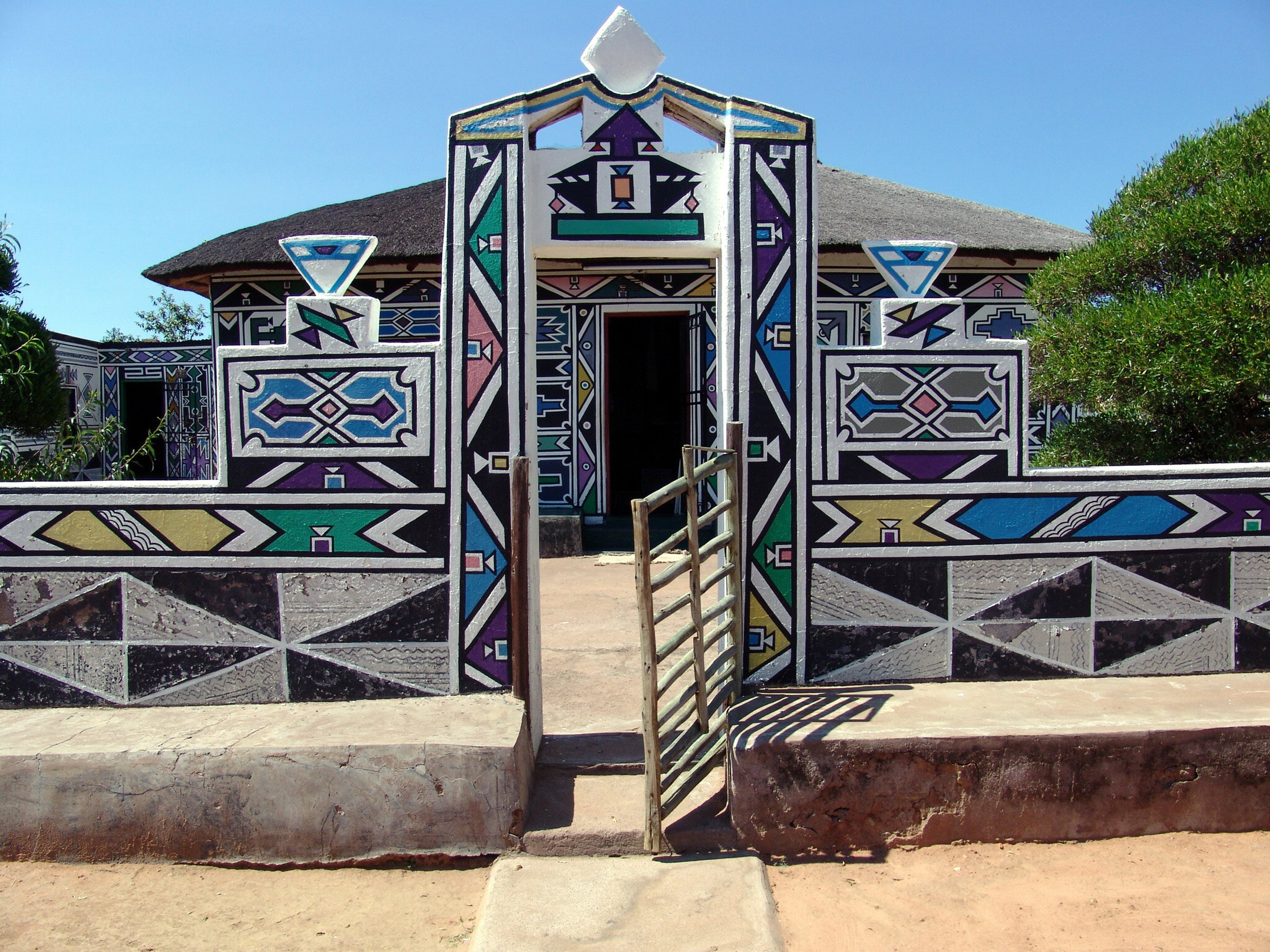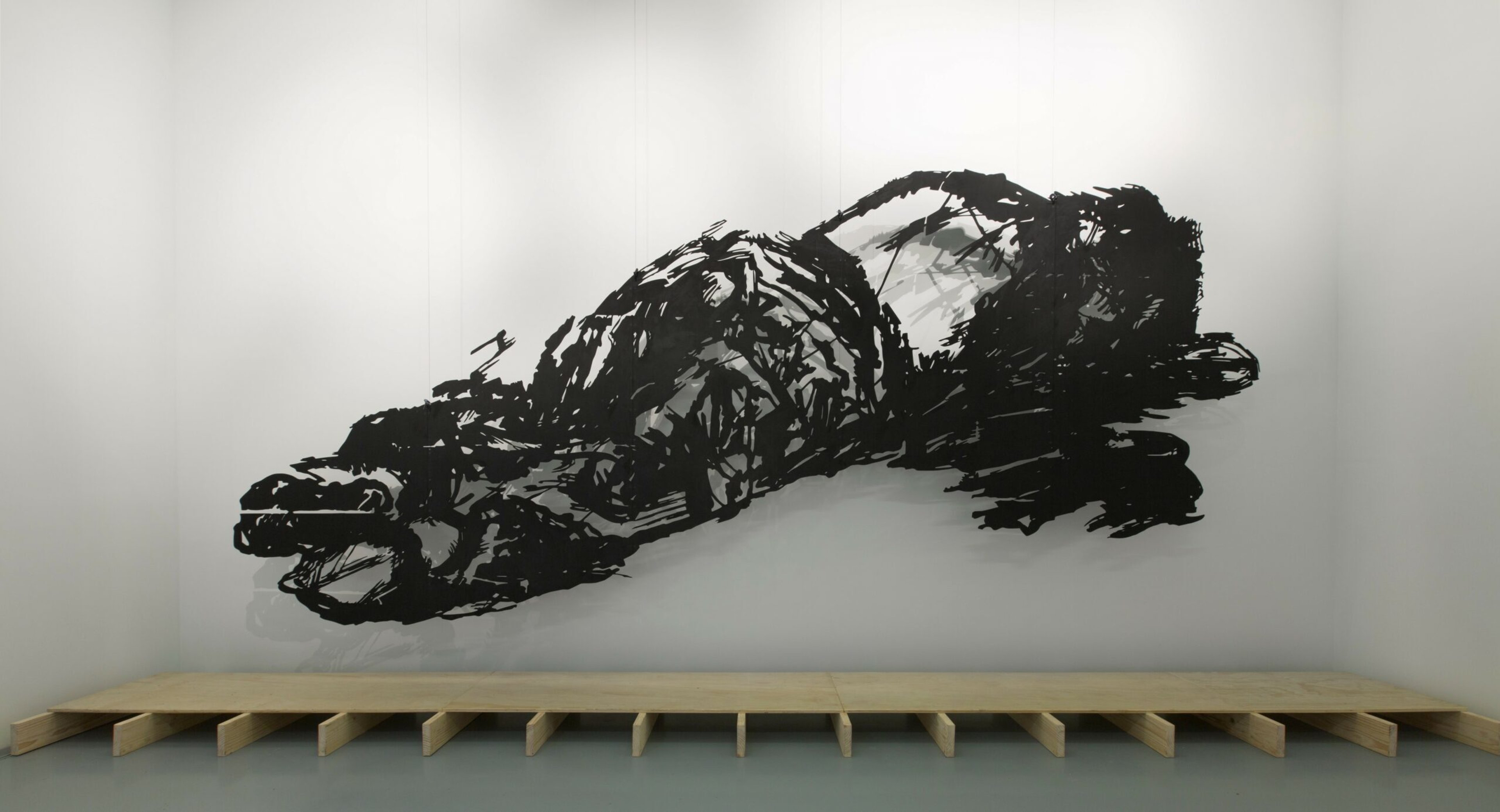South African Artist Esther Mahlangu
‘IsiNdebele is my culture and I love it. I speak IsiNdebele, I walk IsiNdebele and I wear IsiNdebele.’
– Esther Mahlangu
Born on a rural farm in the Mpumalanga Province of South Africa in 1935, Esther Mahlangu was destined to be the first of six children born to her family. For as tradition dictated, her grandmother and mother were tasked with teaching her the skills of Ndebele wall painting and beadwork. Esther was trained in this art form from around the age of nine years old and recalls that she felt an instant rapport with painting. "My mother and grandmother were very inspiring to me, and soon it was all I wanted to do, so much so they couldn’t keep me away from painting, no matter what duties or chores I had," she remembers. And so, it was Esther’s natural talent and expert execution of these murals, combined with a persistent passion, that would spawn a deep and lifelong commitment to preserving this spectacular art form.
The Ndebele are an ethnic group found throughout South Africa’s Gauteng and Mpumalanga provinces and comprise distinct and melodic Southern Ndebele and Northern Ndebele dialects. Not to be confused with the Ndebele people of Zimbabwe or Botswana, who speak a different language but bear the same name, South Africa’s Ndebele have long used art as a means to reinforce their cultural identity. The art form’s ability to combine external sources of stimulation with traditional design concepts borrowed from their ancestors is an undoubted part of its success. For, stylistically, Ndebele art’s fascination with linear elements in the environment is then eloquently depicted in a bold and graphic sequence of patterns, shapes and motifs.
Traditionally, the Ndebele technique of wall painting was done by a bride to her new home. Once the house had been finished in cow dung, the walls would be decorated with designs rendered in colored clay. "Painting was important in the Ndebele culture because the community could tell by the paintings how well the wife was raised," she explains. Esther’s childhood in the 1940s saw the introduction of modern paints, and that in turn led to the colorful geometrical shapes that now define Ndebele art. These influences would serve to inspire her work later in her career.





